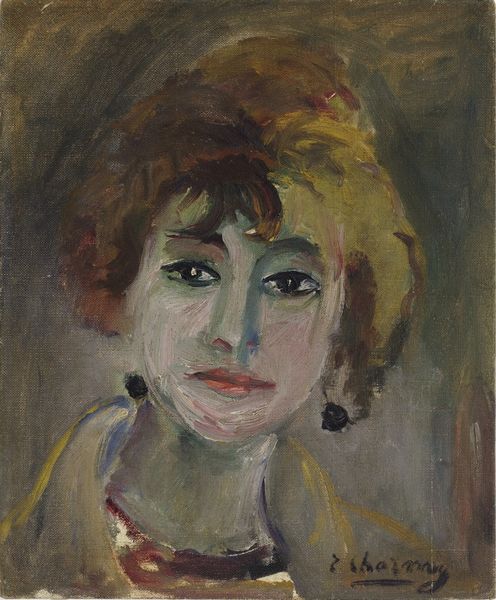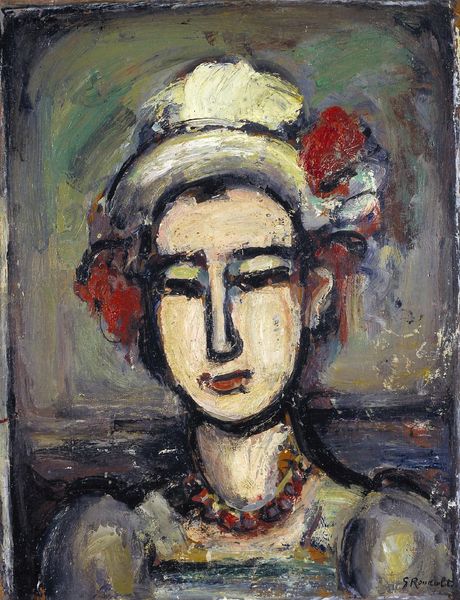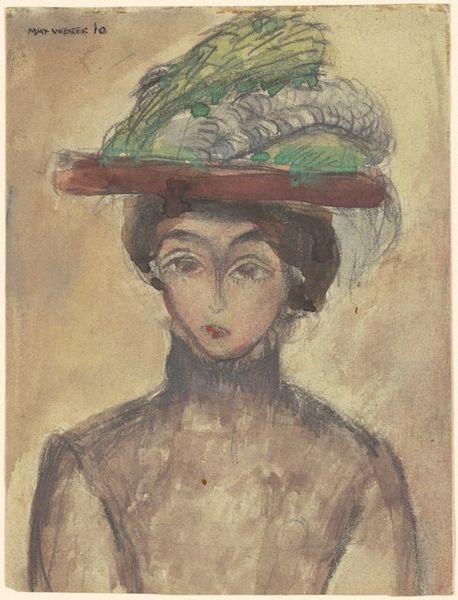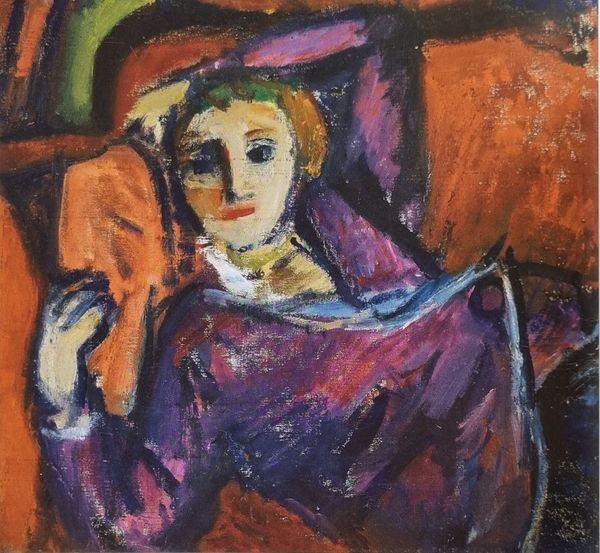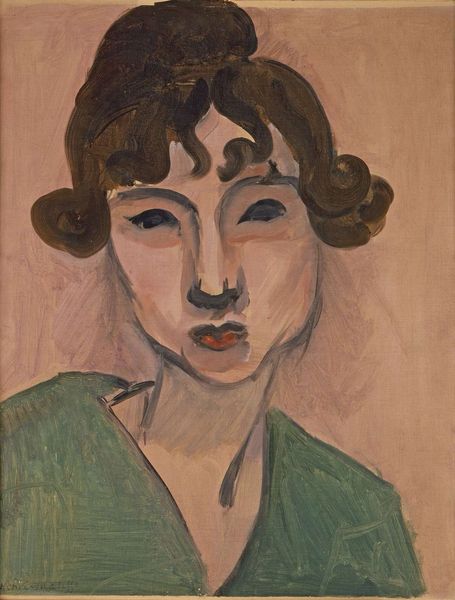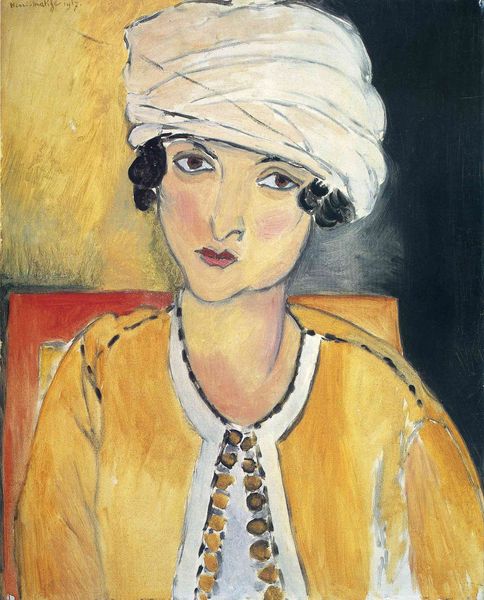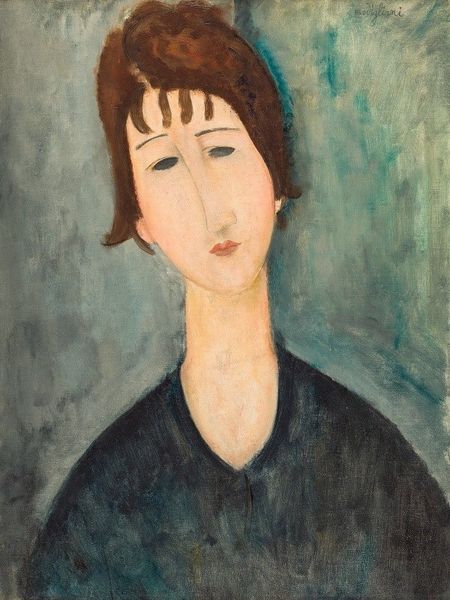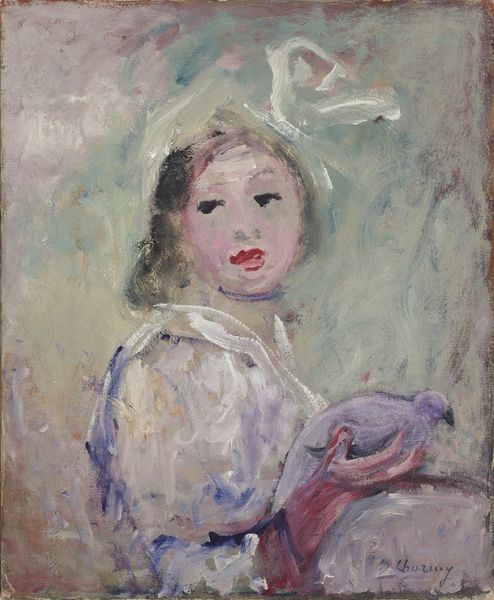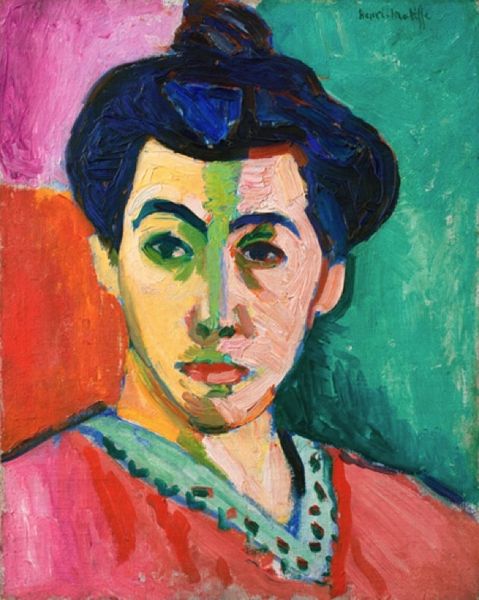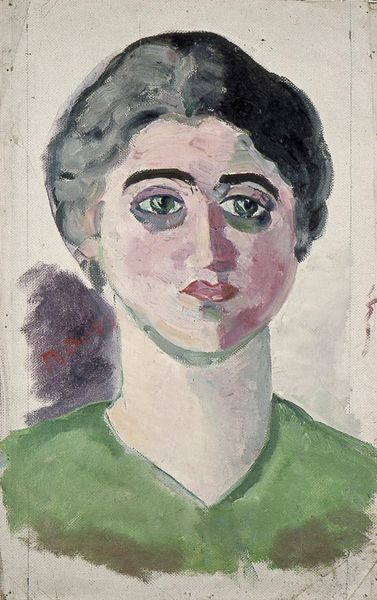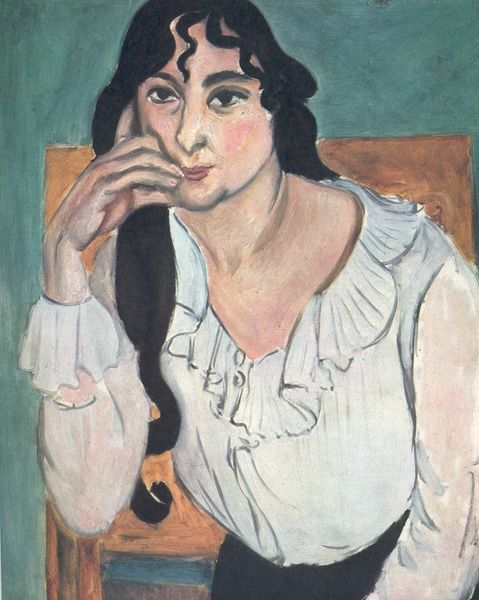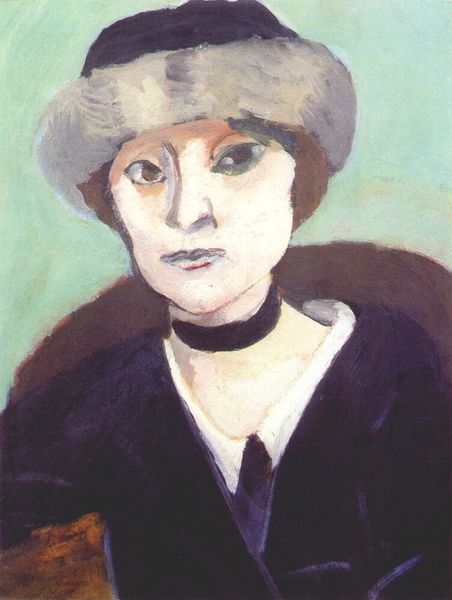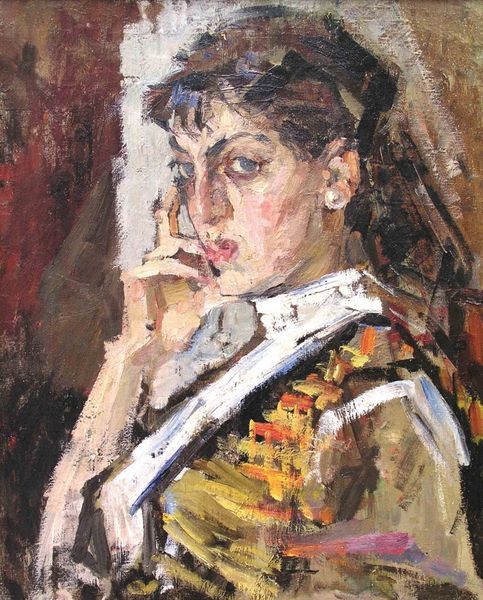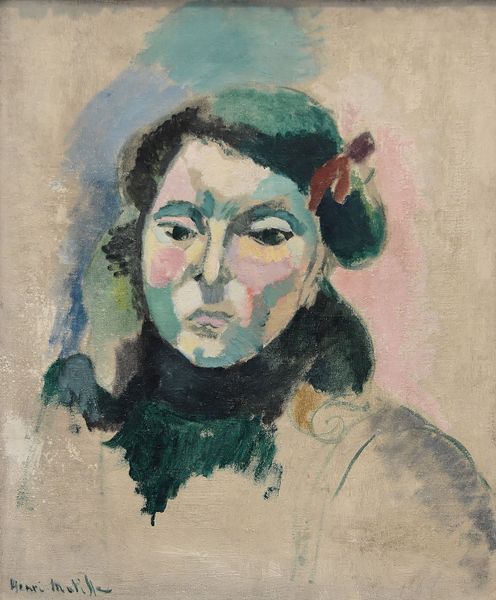
painting, oil-paint
#
portrait
#
figurative
#
fauvism
#
painting
#
impressionism
#
oil-paint
#
figuration
#
oil painting
#
intimism
#
portrait drawing
#
portrait art
Copyright: Modern Artists: Artvee
Curator: Looking at Matisse’s “Tête de femme,” the immediate impression I get is one of quiet contemplation. The muted colors and the way she rests her chin in her hand suggests a moment of introspection. Editor: Matisse, ever the radical in the color world. It’s an oil painting, though undated, the stylistic gestures feel aligned with his Fauvist explorations. Consider the bold lines and simplification of form here. How might we situate this particular representation within prevailing notions of early 20th century female representation? Curator: For me, the turban is significant. Head coverings have held diverse symbolic weight across time, cultures, often connected to status or identity. It's evocative of North African portraiture popular at the time. What meanings are evoked? Editor: Precisely! It's impossible to divorce this from its colonial context, isn't it? The "Orient" as a site of fantasy and projection in European art. One has to wonder what Matisse, as a white, European man, was hoping to communicate, or perhaps consume, with this image. Curator: Perhaps. Or maybe he's capturing the universal human experience of reflection, abstracting away specific cultural baggage. The simplification of her features feels more universal than culturally specific. What stories can we weave when these objects, detached from their original function or society, speak to a collective human narrative? Editor: I push back on the idea of universality. Isn't it too often deployed to flatten important distinctions of race, class, and gender? This portrait speaks to a very particular kind of cultural tourism of its era. Curator: That tension, between the specific and the universal, is exactly what makes the image so compelling. The simplified forms and the carefully chosen colors can allow access through various interpretive lens. The lack of specificity allows broader entry into an open field. Editor: Agreed. We can not forget art serves as both document and, sometimes, unwilling propagandist for the aesthetics and ideology of its own moment. I suppose the onus is on us to read critically and ask those important "who benefits" questions as much as the "what does it mean" ones. Curator: Yes, the image invites conversations and we can only make efforts towards opening these conversations up and out!
Comments
No comments
Be the first to comment and join the conversation on the ultimate creative platform.
